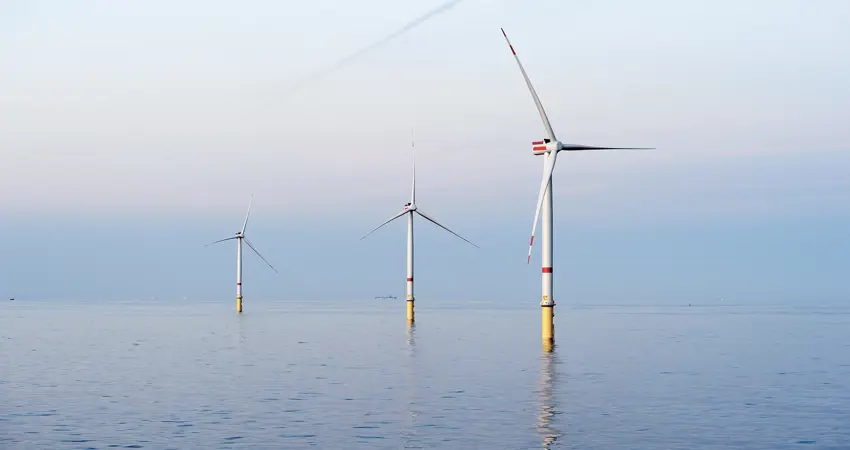22 Feb 2019
University Impact Award for contribution to offshore wind turbine foundation designs
Professor Byron Byrne won the Commercial Impact category in the 2019 MPLS Division Impact Awards

Image: Offshore wind farm, courtesy of Ørsted
Professor Byron Byrne has won the MPLS Impact Award 2019 (Commercial Impact) for his contribution to new design methods for the foundations that support offshore wind turbines. Professor Byrne currently holds the Ørsted / Royal Academy of Engineering Research Chair in Advanced Geotechnical Design in the Department of Engineering Science.
MPLS is one of the four University divisions, consisting of all the natural and physical science departments at Oxford. The annual MPLS Impact Awards aim to foster and raise awareness of impact by rewarding it at a local level.
Offshore wind is central to decarbonising the world economy, with at least 1,200 wind turbines planned to be installed around UK coastlines in the next decade, and thousands more elsewhere around the world. As part of the PISA project (2014-2016), for which he was the Principal Investigator, Professor Byrne has developed new design methods that reduce the risk and cost associated with the monopile foundations that support offshore wind turbines. These foundations are large diameter steel tubes, usually 8m to 10m in diameter, 30m to 50m long, and weighing up to 1000 tonnes. They are typically impact driven into the seafloor using pile-driving equipment.
The close involvement of commercial partners has ensured the research was focused on industry needs
Design optimisation of these foundations is fundamental to wind farm economics and long-term turbine performance. This research, undertaken with the close involvement of ten industry partners led by Ørsted, and an academic team from Oxford, Imperial College London and University College Dublin led by Professor Byrne, replaces design approaches dating back 50 years with new and innovative ideas. The new methods allow the turbine structures to be optimised for specific geographic locations, leading to savings of up to 30% of the steel required for each monopile foundation. In addition the new approaches allow monopiles to be used at deeper water sites, which might otherwise require more costly ‘jacket’ structures to be adopted.
Professor Byrne says, “By taking into account complex offshore ground conditions, lighter and more cost effective structures can be created. This research has significant implications for the future of energy production, in particular because of its contribution towards the goal of making offshore wind subsidy-free.”
The insights were developed from a wide range of activities including numerical modelling, theoretical developments, laboratory model and element testing, site investigation and a comprehensive medium scale field pile testing campaign to validate the new design method. Key outputs include generic design procedures for wind farm designers as well as sets of bespoke design equations. The close involvement of commercial partners has ensured the research was focused on industry needs, and meant a rapid uptake of outputs throughout the project and afterwards.

Professor Byrne receiving his Award Image courtesy of @MPLSOxford




